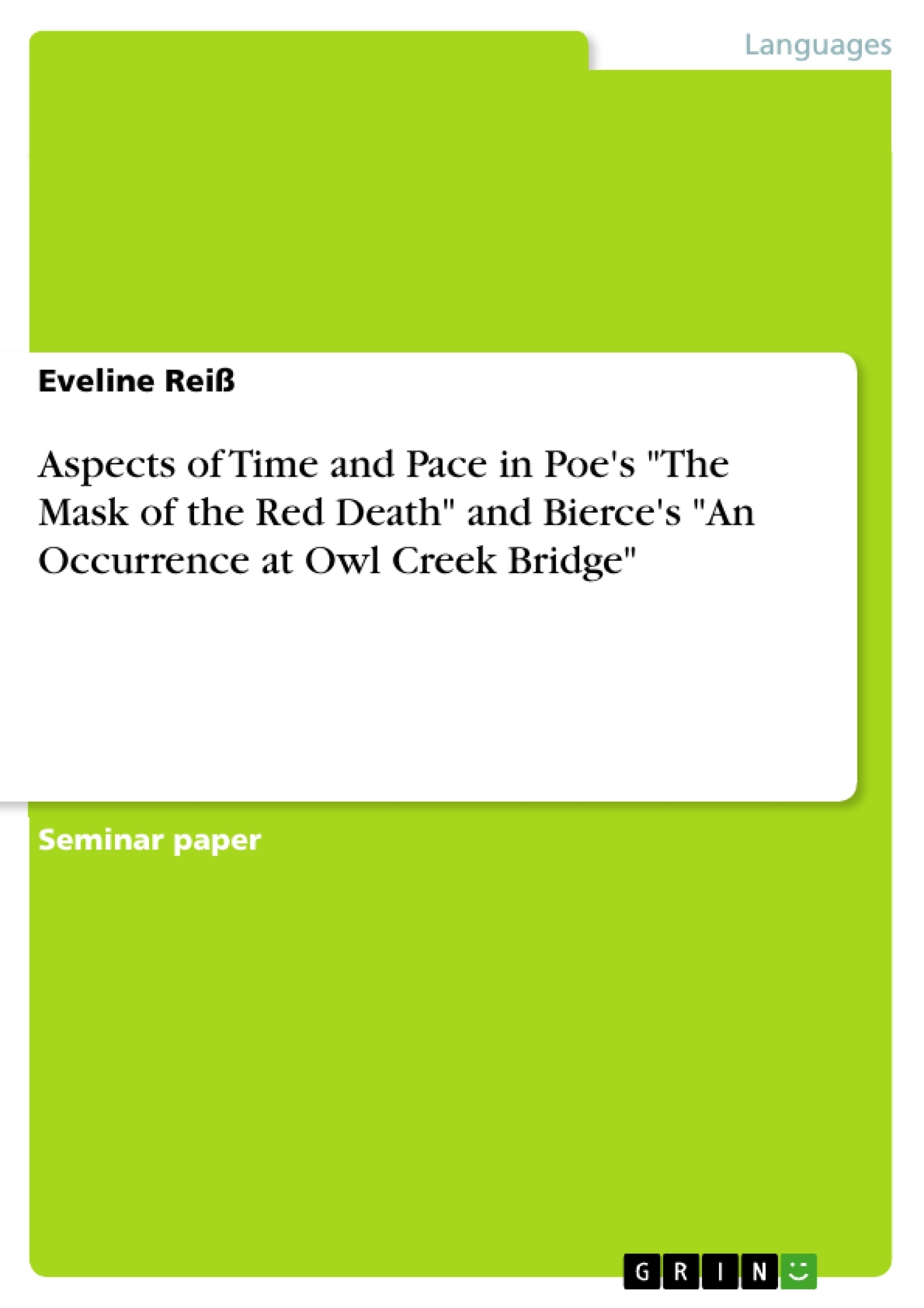Nach einer Definition der 'short story' und der Einführung der "literary terms" (Quelle: Klarer 2004) erfolgt die Analyse von "Time and Pace" in den beiden oben genannten Titeln. Kurz und knapp gehalten als Überblick.
Inhaltsverzeichnis (Table of Contents)
- A definition of the term 'short story'
- Short Summaries of “The Masque of the Red Death” and “An Occurrence at Owl Creek Bridge”
- “The Masque of the Red Death” by E. A. Poe
- “An Occurrence at Owl Creek Bridge” by A. Bierce
- 'Time and pace': Terminology
- Aspects of time and pace in the selected stories
- Time and pace in “The Masque of the Red Death”
- Time and pace in “An Occurrence at Owl Creek Bridge”
- Literature Consulted
Zielsetzung und Themenschwerpunkte (Objectives and Key Themes)
This essay explores the role of time and pace in two short stories: “The Masque of the Red Death” by Edgar Allan Poe and “An Occurrence at Owl Creek Bridge” by Ambrose Bierce. The analysis focuses on the interplay between discourse time and story time, as well as the techniques used to accelerate or decelerate the pace of the narratives.- Defining the short story genre and its key characteristics
- Summarizing the plots of “The Masque of the Red Death” and “An Occurrence at Owl Creek Bridge”
- Examining the concepts of discourse time and story time in literary analysis
- Analyzing the techniques of pace used in each story, including summary, time stretch, scene, ellipsis, flashback, and flash forward
- Exploring the role of time and pace in creating the narrative's overall effect on the reader
Zusammenfassung der Kapitel (Chapter Summaries)
- The first chapter offers a brief definition of the “short story” as a literary genre, highlighting its distinct features compared to novels. This includes the relative brevity of the text, the rapid progression towards a climax, and the use of techniques like flashbacks to ensure reader comprehension. Additionally, the chapter emphasizes the short story's focus on a pivotal event in the protagonist's life, often told from a single point of view.
- The second chapter provides concise summaries of “The Masque of the Red Death” and “An Occurrence at Owl Creek Bridge”. In Poe's story, Prince Prospero attempts to escape the deadly “Red Death” plague by hosting a lavish masquerade in his castle. However, the mysterious presence of an unknown figure, representing the “Red Death” itself, leads to the prince's downfall, ultimately proving that death is inescapable. Bierce's story depicts the execution of a Confederate planter named Peyton Farquhar. During the execution, Farquhar experiences a dramatic and seemingly miraculous escape, only to realize that this escape is merely a figment of his imagination in the final moments of his life.
- The third chapter introduces the terminology used to analyze time and pace in literary texts. The concepts of discourse time (the time spent reading or telling the story) and story time (the fictional time within the story) are explained. The chapter further explores various pacing techniques, including summary (acceleration of time), time stretch (deceleration of time), scene (equal duration of discourse and story time), ellipsis (omission of time), and flashback/flashforward (shifting between past and future events).
Schlüsselwörter (Keywords)
The essay focuses on the concepts of time and pace in literary analysis, exploring the interplay between discourse time and story time, as well as the techniques used to manipulate these elements in the creation of narrative effect. Key terms include short story, discourse time, story time, summary, time stretch, scene, ellipsis, flashback, flashforward, "The Masque of the Red Death," "An Occurrence at Owl Creek Bridge," Edgar Allan Poe, Ambrose Bierce.
Excerpt out of 8 pages
- scroll top
- Quote paper
- Eveline Reiß (Author), 2006, Aspects of Time and Pace in Poe's "The Mask of the Red Death" and Bierce's "An Occurrence at Owl Creek Bridge", Munich, GRIN Verlag, https://www.grin.com/document/134284
Look inside the ebook



